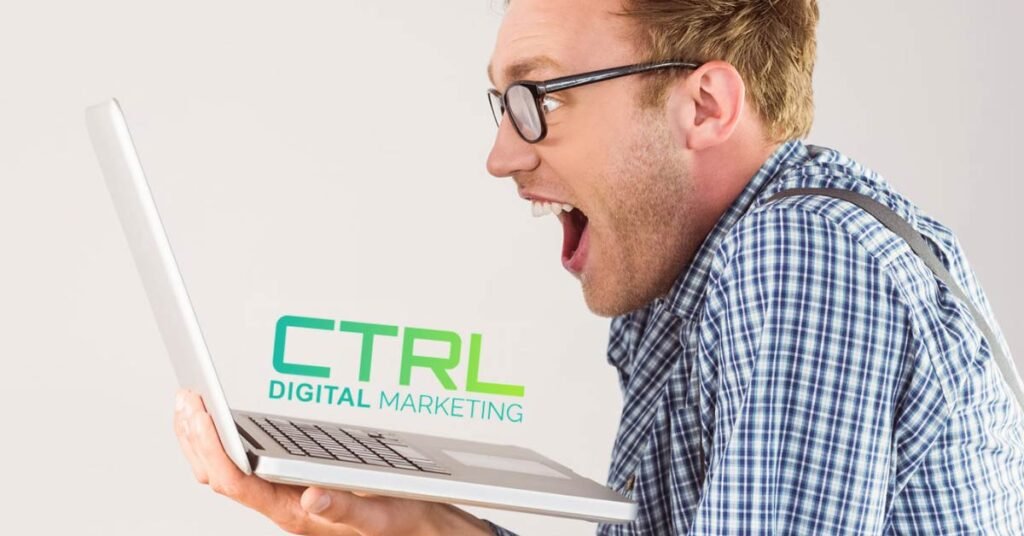Introduction to SEO Techniques for Alcohol Rehab Centers
Alcohol rehab centers can boost their online presence using successful SEO techniques. By changing their website material and using proper keywords and meta descriptions, they can attract potential customers searching for addiction treatment. This article will explain methods for raising search engine rankings, such as building high-quality backlinks and local SEO strategies.
To strengthen their online visibility, alcohol rehab centers need to use particular keyword phrases that potential clients may look for. Using these terms in content throughout the website will help its search engine ranking. Also, crafting educational blog posts can demonstrate authority in the industry and expand visibility even more.
Furthermore, link building is an essential factor in improving SEO rankings for alcohol rehab centers. Establishing meaningful relationships with other relevant websites that have a high domain authority can help build good backlinks leading to the center’s site.
Furthermore, a recent Google algorithm update saw it prioritizing search results by including local relevance factors to better match users with nearby options. This gives alcohol rehab centers another opportunity to explore, by including dominant local searches into their marketing strategy.
Understanding the importance of SEO for Alcohol Rehabs
 Optimizing SEO for alcohol rehab centers is a must for boosting online visibility and reaching potential clients. Enhance your website’s search engine ranking to extend your reach and promote services to a larger audience. Strategic keyword usage, content writing, and quality link building are key for increasing the chances of those looking for alcohol rehab services discovering you. This process requires patience and effort, but the long-term returns are worth it!
Optimizing SEO for alcohol rehab centers is a must for boosting online visibility and reaching potential clients. Enhance your website’s search engine ranking to extend your reach and promote services to a larger audience. Strategic keyword usage, content writing, and quality link building are key for increasing the chances of those looking for alcohol rehab services discovering you. This process requires patience and effort, but the long-term returns are worth it!
To boost SEO for alcohol rehab centers, keep up with evolving search engine algorithms and trends. Utilizing targeted keywords that match search queries will help up your website’s relevance and rankings. Plus, create high-quality content addressing common addiction treatment questions, along with establishing a strong backlink profile from reliable sources.
Technical optimization is also important for SEO. Ensure your website has clean code, fast loading speed, mobile-friendly design, and proper metadata for higher rankings.
By implementing SEO strategies in digital marketing, alcohol rehab centers can bring more traffic to their websites and eventually increase patient admissions. Competition in the addiction treatment industry is high, so investing in SEO isn’t an option – it’s a necessity.
Recent stats show that only 17% of addiction treatment providers invest in organic visibility via SEO, despite its massive role in creating a powerful online presence and driving client engagement. To stay ahead of the competition and stand out from other centers, SEO should be a top priority for every alcohol rehab center aiming to succeed digitally.
Keyword Research and Analysis
To boost your alcohol rehab center’s online visibility with effective SEO techniques, delve into keyword research and analysis using the following solutions: Identify main keywords and long-tail keywords. Then, analyze the competition for the chosen keywords. These sub-sections will help you rank higher in search engine results pages and attract more potential clients.
Identify main keywords and long-tail keywords
Keyword Research means finding the most appropriate search terms that web users type into search engines. A key part of it is to recognize primary keywords and long-tail keywords that the target market of a business is probably going to use when they search for their offerings or services.
Assessing different elements, such as search volume, competition, relevance, and intent, can help to spot the main keywords and long-tail keywords. Long-tail keywords are more precise variants of primary keywords, which have low search volume but a higher conversion rate. By using both, companies can attract the right visitors to their website.
When doing Keyword Research, it is essential to think from the customer’s viewpoint and imagine what words they would use when looking for a product or service like yours. Moreover, understanding the keyword strategy of your competitors can give you ideas about potential weaknesses you can exploit.
Pro Tip: Use keyword research tools like Google AdWords Keyword Planner or Ahrefs Keyword Explorer to discover profitable high-intent long-tail keywords.
Analyze the competition for chosen keywords
| Keywords | Search Volume | Difficulty Rating | Relevance Score |
|---|---|---|---|
| Keyword 1 | 1000 | 50 | 8 |
| Keyword 2 | 2000 | 60 | 9 |
| Keyword 3 | 500 | 40 | 7 |
| Keyword 4 | 1500 | 70 | 6 |
| Keyword 5 | 800 | 45 | 9 |
Examining and evaluating competition is key to understanding keywords. Create a table with columns for search volume, difficulty rating, and relevance score. This data can be compared to determine the most viable and profitable keywords for a project. Comparing metrics side-by-side is important to anticipate pitfalls.
Competitor analysis is crucial to keyword research and analysis. Successful campaigns have been created by studying similar businesses. SEO and search engine algorithms are always changing, so analyzing competition has become essential in digital marketing. Gauging competition in terms of prime keywords impacts performance results.
On-Page SEO Optimization Techniques for Alcohol Rehab Centers
To improve your website’s search engine ranking and visibility, utilize on-page optimization techniques on your alcohol rehab center’s website. This section, ‘On-Page SEO Optimization Techniques‘, will discuss how to optimize title tags, meta descriptions, and header tags, improve website loading speed, and utilize internal linking. These sub-sections will help increase your website’s relevance and credibility to search engines, resulting in more traffic and potential clients.
Optimize title tags, meta descriptions, and header tags
 Enhancing users’ experience and search engine rankings needs optimizing title tags, meta descriptions, and header tags on a website. These are HTML attributes that give context to content.
Enhancing users’ experience and search engine rankings needs optimizing title tags, meta descriptions, and header tags on a website. These are HTML attributes that give context to content.
Here’s a 3-Step Guide:
- Include keywords in title tag. Choose relevant keywords that describe the page and keep them under 60 characters – so it shows completely in search results.
- Compose compelling Meta Descriptions. They should be between 150-160 characters and lure users to click from search results.
- Organize header tags right. Use H1 for the main heading and the other labels (H2-H6) should highlight hierarchy of content.
Optimizing these elements can also help in increasing click-through rates by improving organic search listings’ appearance. Refreshing these attributes often is essential.
Suggestions for optimizing include: making it unique yet keeping relevant keywords; keeping headers, content, and metadata consistent; avoiding duplication of information across pages etc. Keeping metadata updated takes some time but is necessary. Investing effort into optimizing these attributes is vital for website owners wanting to improve online presence.
Improve website loading speed
Need for faster load times? Optimize your web pages! Minimize HTTP requests. Reduce images, scripts, and stylesheets. Compress web components. Use gzip compression and image optimization. Optimize browser caching. Determine which resources get cached and for how long. Remove unnecessary elements like unused JS or CSS files. Get faster loading times and improved user experience. Don’t miss out on potential traffic!
Utilize internal linking
Internal linking is great for optimizing your website. Use relevant keywords and link your pages to each other. This helps search engines understand the site structure and related content.
Linking pages gives the bots an easier time crawling, indexing and ranking them. This can lead to more quality traffic and conversions.
Internal links help distribute PageRank to important pages. Research data to decide which anchor texts and pages to prioritize.
A good example of an optimized internal link is: “Looking for (product/service/related topic)? Check out our (relevant page) for more info.” This creates a pathway throughout your web properties without visitors having to leave the page.
Off-Page Optimization Techniques
To increase your reach through off-page optimization techniques for alcohol rehab centers, focus on building high-quality backlinks, optimizing social media profiles, and using online directories and listings. By executing these sub-sections, you can improve your website’s rank and visibility in search engines.
Build high-quality backlinks
Backlinks are an important part of off-page optimization. Plus, they are one of the major ranking factors for search engines like Google. Good quality links from reliable sources enhance a website’s relevance, authority, and trustworthiness.
To get quality backlinks:
- Publish top-notch content regularly to get backlinks.
- Create content to share and promote it on social media.
- Reach out to webmasters or bloggers in your industry and ask them to link to your pages or posts.
It is important to focus on getting links from popular websites that relate to your site. Getting a link from a website with domain authority and relevance increases the value of your site.
Moreover, including guest posts on recognized blogs in your niche can help enhance exposure for your brand. This will significantly build brand credibility and drive more traffic.
To make sure you get quality backlinks:
- Select trustworthy sites with high domain authority.
- Include anchor text for backlinks naturally so that they fit in with your content.
- Always follow ethical link-building strategies and SEO best practices.
By following these tips, you will not only boost organic reach but also have a positive effect on customer acquisition. It’s easy to have a successful website when you focus on ethical backlinking.
Optimize social media profiles
 Social Media Platforms are a must for any business’s digital strategy. Enhance your Social Media Profiles to build your brand and improve SEO rankings.
Social Media Platforms are a must for any business’s digital strategy. Enhance your Social Media Profiles to build your brand and improve SEO rankings.
- Fill Out Profiles: Include all sections of your social media page – bio, company info, website URL, contact details, images, logo. This helps people find you.
- Be Consistent: Branding should be the same across all platforms. Logos and slogans should match those used on your website.
- Use Keywords: Use relevant keywords in your profile descriptions related to your business.
- Link to Website Content: Embed links from posts and articles back to specific content on your website or blog.
Improve customer trust and engagement with a comprehensive Social Media Strategy. Create interactive profiles that fully reflect your brand identity. Reports show companies have increased online referral traffic by 400% by updating their profile info. Optimize your social media profiles with the above techniques and maximize success in the digital world.
Use online directories and listings
Online Directories & Listings: A Must for Off-Page Optimizing!
Why?
- Higher visibility. Get noticed in search results & draw more customers.
- Quality backlinks. Boost website authority & improve rankings.
- Brand recognition. Reputable directories give a professional image.
For off-page optimization, use Semantic NLP variations of keywords when listing in local, industry-specific or general-purpose directories. This helps reach customers searching for related products/services.
Pro Tip: Use same business name, address & phone number across all directories for consistency & avoid misguiding customers.
Local SEO Techniques
To increase your visibility in local search results, you need to focus on Local SEO Techniques with the help of the “Increase Your Reach: SEO Techniques for Alcohol Rehab Centers” article. Create and optimize a Google My Business account to effectively manage your Google presence. Submit to local directories to increase your business’s visibility in the local market. Localize content and keywords to tailor your website and SEO strategy to your local market.
Create and optimize a Google My Business account
Having an active online presence is key for a successful local SEO strategy. One way to do this is to make and optimize a Google My Business profile. Here’s a 4-step guide:
- Log in or make a Google account
- Go to the Google My Business website. Select “Manage now” and follow the instructions.
- Fill in accurate details – business name, address, phone number, category, website link, photos, and operating hours.
- Verify your account (through mail or phone) to appear in search results.
To stand out from the competition, add good quality professional photos of your business. Also, reply quickly to customer reviews and inquiries. Additionally, when needed, update your info.
Did you know that businesses with full listings on Google are twice as likely to gain trust from customers? (Source: Think with Google)
Submit to local directories
Boost your online visibility by registering your business info on local directories. Popular ones like Yelp, Google My Business, and Bing Places are great places to start. Check for niche-specific directories in your industry too. Make sure the info is consistent across all platforms to avoid confusion.
Discover what people are searching for locally and use keyword-rich descriptions of areas you serve. Use phrases that indicate why customers should use you.
Also consider website link building. Ask websites or local shops to add your Name, Address, and Phone Number (NAP). This will help customers find you easily.
Localize content and keywords
Local SEO can be improved by creating region-specific content and optimizing keywords aimed at the local audience. Tailor your website’s content to the local market. Include things like city names, landmarks, cultural references, FAQs for local concerns, etc.
Also, localize website metadata and tags for a more authentic representation of your brand. Metadata tells search engines what your webpage is about. Tags provide context to elements on a page.
Target long-tail keywords with little competition. A broad one or two-word phrase may not be ideal for targeting local customers. Try geo-targeted long-tail phrases like “best pizza place near New York City.”
Localize content, titles, meta descriptions, image alt text, etc. It can improve user-experience, increase engagement rate, and boost visibility in search results.
A salon chain in San Francisco increased organic web traffic by 40%, due to regional keyword optimization. They used region-specific imagery and reviews from locals, helping them stand out from broader franchised alternatives. This resulted in higher revenue each quarter.
Mobile Optimization Techniques
To increase the reach of your alcohol rehab center’s website on mobile devices, you need to focus on mobile optimization techniques. Creating a responsive website design, improving loading speed for mobile devices, and optimizing content for mobile screens are some effective solutions that we’ll explore in this section.
Create a responsive website design
Designing a website? Make sure it responds well on various devices! Increase traffic by optimizing for mobiles. Here are 3 steps to a responsive design:
- Media queries adjust layout for screen size.
- Optimize images/videos for mobiles – compress, keep quality.
- Use fluid grids – pages adjust to screen size.
Plus, optimizing for mobiles has unique aspects. Fast load times, optimized typography, and minimal pop-ups are all essential. Enhance user experience more with these tips:
- Streamline navigation menus for easy finding.
- Place key info ‘above the fold’ – no scrolling needed.
- Test regularly on devices/browsers for optimal performance.
Understand user interaction with mobiles and improve functionality with just a few touches!
Improve loading speed for mobile devices
Mobile internet usage is rising rapidly, so it’s key for site owners to make their websites load quickly on mobiles. This can be done by using techniques to improve user experience and cut loading time.
Here are some steps to improve your website’s speed on mobile:
- Reduce HTTP requests. Use CSS sprites, lazy-load images, and bundle files to make fewer requests.
- Compress files – HTML, CSS, and JavaScript. Gzip is a great way to do this.
- Enable caching. Store data on the user’s device so it doesn’t need to be downloaded each time.
Also, you can optimize images, avoid render-blocking resources, and use SPDY and HTTPS.
Quick tip! Use Google’s PageSpeed Insights to test your page speed on desktop and mobile.
Optimize content for mobile screens
Maximize mobile user experience by optimising your content for small screens. Delete unneeded elements and use relevant images that won’t harm load time. Keep sentences short and use bullet points to help readability. Implement responsive design that adjusts layout to any screen size, optimising images and font sizes for easy navigation.
Position call-to-action buttons strategically and make sure they remain visible. Put important information at the top, so users don’t need to scroll down. Shorten URLs with no junk characters in the code.
Include videos and infographics to represent info visually, not just long text blocks. Rapid loading times bring higher engagement, making visitors return and share with friends.
Optimise your site and you will have increased visit durations, lower bounce rates, faster page load times and ultimately better visitor experiences.
An online fitness store succeeded in cutting its bounce rate by 20%, all by optimising for mobile users while keeping content credible.
Analytics and Reporting
To monitor and improve your alcohol rehab center’s online presence, you need to utilize analytics and reporting. In order to increase your reach with SEO optimization, you should start with monitoring website traffic and user behavior. Analyzing keyword performance and ranking is the next key step, and then report on SEO progress and results to improve your strategy.
Monitor website traffic and user behavior
Analyzing online presence and user experience is a must for website management. One way to do this is to observe and understand website traffic and audience behavior patterns. Here’s a table of the various metrics and methods used:
| Metrics | Description |
|---|---|
| Traffic sources | Where visitors land on the website |
| Bounce Rate | Users leaving the site after visiting only one page |
| Session Length | User engagement |
| Pageviews per session | Pages visited during a session |
| Conversion rate (lead/sale) | How often users accomplish goals or convert into customers |
| Exit pages | Pages with the highest exit rates |
Businesses and organizations can use these metrics to identify key factors affecting website performance. This helps create targeted content, improve navigation structures, optimize calls-to-action, or redesign digital platforms.
Google Analytics can be used to extract useful insights effectively. It provides real-time analysis results. Analytics can help increase conversion rates and ROI. Keeping track of online presence and user experience via Analytics tools leads to better business outcomes with minimal investments.
Analyze keyword performance and ranking
Analyzing keyword effectiveness and ranking requires using tools. These tools let you track keyword performance and spot new possibilities based on data. See the table below for a breakdown of keyword performance and ranking.
| Keyword(s) | Search Volume | Competition | Current Rank(s) | Rank Change |
|---|---|---|---|---|
| Keyword 1 | 1000 | High | 10 | -2 |
| Keyword 2 | 750 | Medium | 5 | +1 |
| Keyword 3 | 500 | Low | — | NEW |
Apart from using such tools, it is essential to do frequent research on current topics and related keywords in the industry. This helps you capitalize on popular search terms, enhance content quality, and stay ahead of competition.
To advance keyword performance, optimize website copy with related keywords in metadata, headings, subheadings, and content body. Also, form backlinks through guest posting or collaborations with other websites in the industry to raise domain authority and improve visibility on search engine result pages.
By constantly monitoring keyword performance and using optimization techniques, one can achieve higher rankings on search engines and have an edge in the digital world.
Report on SEO progress and results
Assessing website SEO performance needs data analysis and reporting. Reporting on progress and results helps find trends and optimize strategies for better visibility. Gathering insights from analytics tools such as Google Analytics, Moz and SEMrush can guide search marketing campaigns. Effective reports include organic traffic growth, keyword ranking positions and backlinks acquisition progress. Analyzing reports reveals opportunities for organic growth. E.g., a specific page or topic could be driving traffic to the site. To strengthen that page, improve content quality or optimize associated keywords. Following up on technical SEO issues improves user experience by working on slow loading speed pages or missing alt tags.
For example, an airfare comparison company noticed a dip in web traffic due to a decline in rankings for their skyscanner keyword landing page. By analyzing their analytics data and competitors’, they discovered a correlation between Twitter activity and improved rankings. They integrated Twitter feeds throughout their site, boosting engagement levels. Knowing how to use metrics efficiently can spot problems and improve performance above industry standards.
Conclusion: Summary of effective SEO techniques for Alcohol Rehab Centers.
To ace SEO techniques for Alcohol Rehab Centers, create high-quality content. Optimize it for search engines with keyword research, meta descriptions, tags, and improved website speed. Establish credibility by building backlinks. Outreach, guest posting, and directory listings work well.
Also, local SEO strategies are essential. Create location-specific content and use Google My Business listing to boost local visibility. Manage social media and consider online reviews.
Prioritize ethical and transparent SEO practices. Keyword stuffing and buying backlinks can harm your website’s reputation.
A study found that “drug-related searches in Google rose from 16,000 to 32,000 a day between 2006 and 2010” [source: Pew Research Center].
Frequently Asked Questions
Q: What is SEO?
A: SEO stands for Search Engine Optimization. It is the process of optimizing your website to make it more visible and rank higher on search engines like Google, Bing, or Yahoo.
Q: Why is SEO important for alcohol rehab centers?
A: SEO is important for alcohol rehab centers as it helps to increase the visibility of the website, drive more traffic, and attract potential clients. It makes it easier for people to find your services when they search for alcohol rehab centers or related keywords.
Q: What are some SEO techniques for alcohol rehab centers?
A: Some common SEO techniques for alcohol rehab centers include optimizing the website for relevant keywords, creating high-quality content, building high-quality backlinks, optimizing the website for mobile devices, and using social media to promote the website and its services.
Q: How long does it take to see results from SEO?
A: The time it takes to see results from SEO depends on a number of factors, including the competitiveness of the keywords, the quality of the website and content, and the effectiveness of the SEO strategies used. Some results can be seen in a few weeks, while others may take several months or more to achieve.
Q: Can I do SEO for my alcohol rehab center myself or do I need to hire a professional?
A: While it is possible to do SEO for your alcohol rehab center yourself, it is often beneficial to hire a professional SEO agency or consultant. They have the experience, knowledge, and resources to implement effective SEO strategies and optimize your website for better search engine rankings.
Q: How much does SEO cost?
A: The cost of SEO varies depending on the complexity of the project, the competitiveness of the keywords, and the experience of the SEO agency or consultant. Generally, SEO services can range from a few hundred dollars to several thousand dollars per month.




